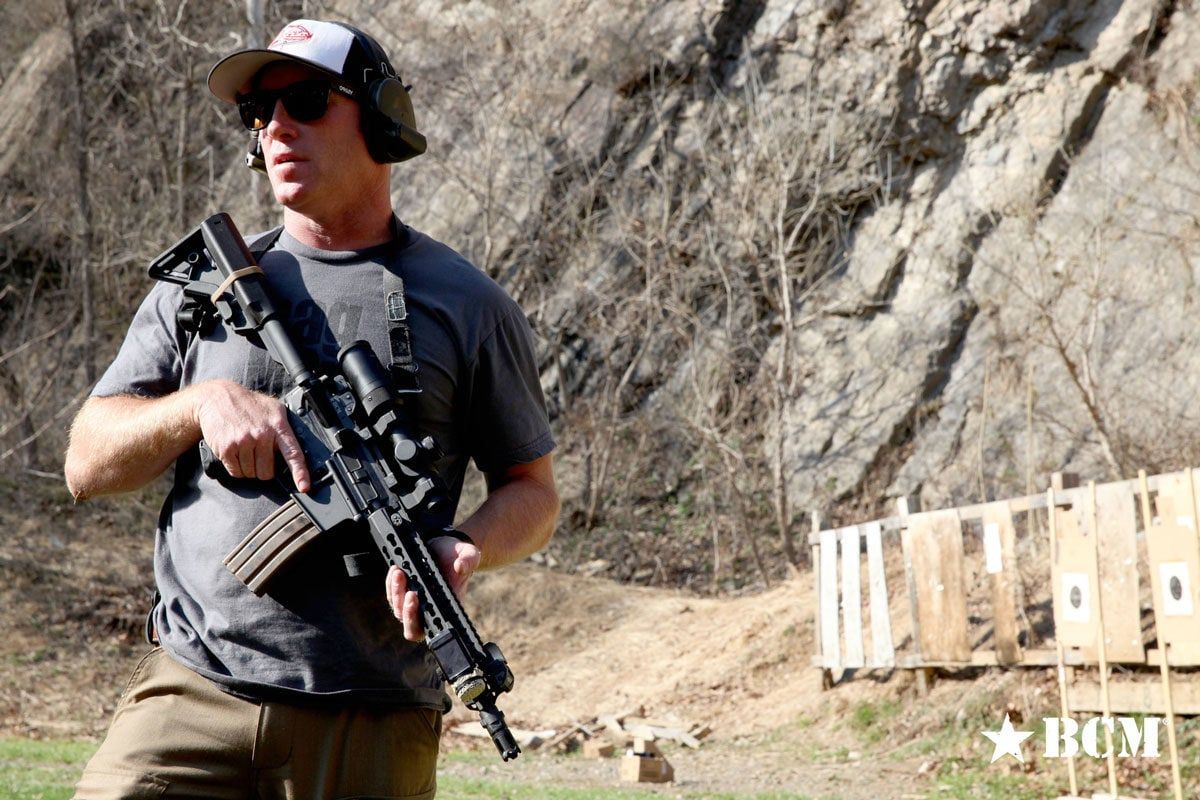
Red dot optic vs. scope on your AR-15…which is “best”? We recently sat down with former Special Mission Unit combat decorated Navy SEAL and sniper, Kyle Defoor to discuss the benefits of a low powered variable optic (LPVO) over a red dot optic on the AR.
While I’ve become very comfortable with my red dot-equipped carbines, Kyle Defoor makes a very convincing case for making the switch from a red dot optic to a true 1x scope with a visible red dot.
Q: Kyle, thanks for sitting down with us as we discuss your opinion on a red dot optic versus a low powered variable optic. Before we dive into that, can you give our readers a bit of background on your career to this point?
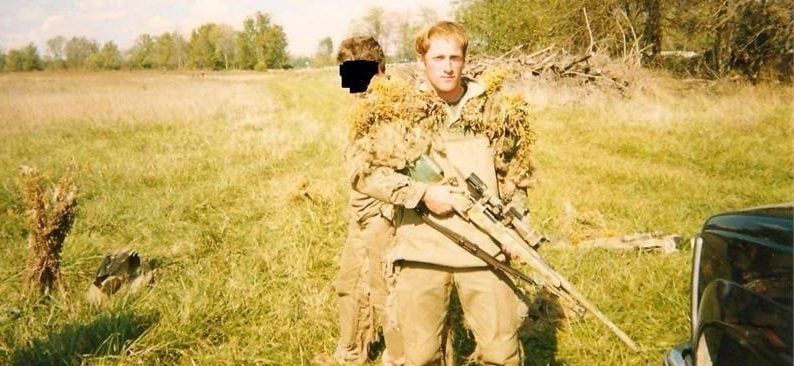
Kyle Defoor: I came into the military when I was 18 years old. I went to BUDS and became a SEAL. At 19 years old, I went to Sniper School. I deployed in the mid to late-90s to Bosnia when that was going on.
From there, I went to another selection course, and attended that and passed it, and served in Naval Special Warfare Development Group a little bit prior to 9/11 and a little bit after 9/11.
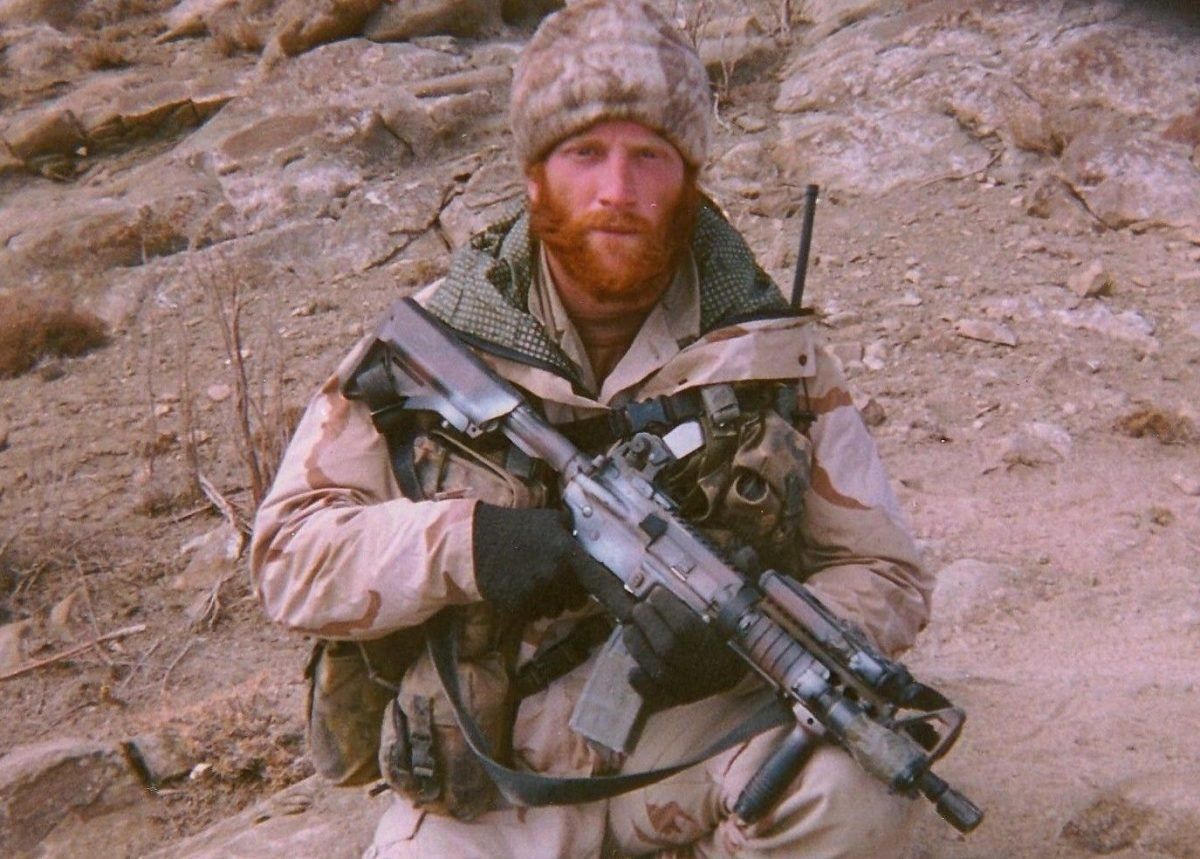
From there, I forward-deployed to Afghanistan as an assaulter and a sniper. So I got a little bit of the wartime from that. I got out of the military with 10 years in, and went to work at Blackwater, and ran Blackwater for about four years. I was the head of training for them.
After that, I formed my own company in 2010, and since then, I’ve been doing my own thing, we currently serve a lot of government contracts…it’s the majority of our business.
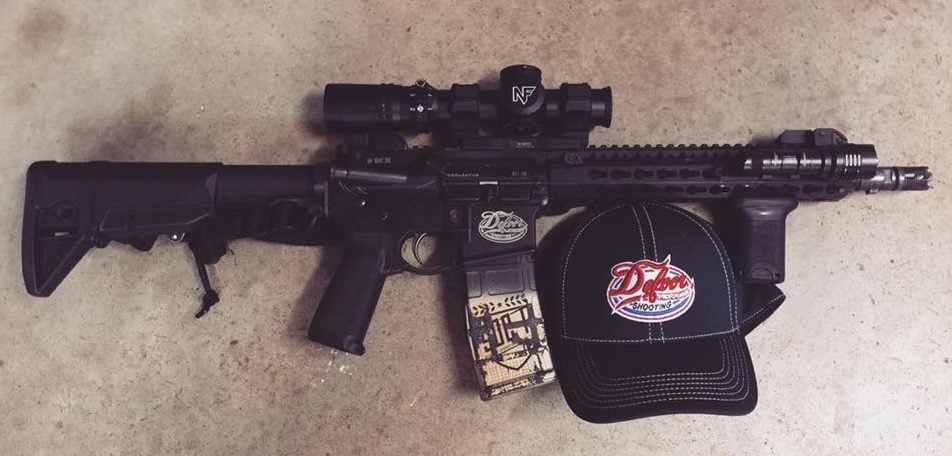
Most of all of those contracts are shooting, in some capacity. Mostly what we do is CQB and sniper stuff. So, a lot of pistol and a lot of carbine and a lot of scoped carbine for the military guys.
We also average about one civilian class a month that we try to do somewhere in the U.S. …That’s about it right now.
Q: Can you tell our readers how they can find out more about you and taking one of your courses?
Kyle Defoor: If you Google my name, they’ll get more info than they’d want.
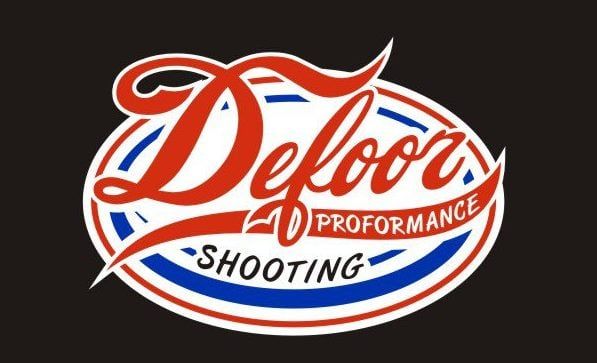
Q: You’ve spent a lot of time with the AR in your career so far…can you describe the changes you’ve seen for better or perhaps worse over the past few decades?
Kyle Defoor: When I first came in, we got issued a Colt Model 727 with a fixed carrying handle. From there, we got the removable carrying handle. From there, we got rail systems that replaced the snap-in fore grips, so I’ve seen the evolution of the platform from no rail system to a rail system.
Originally we mounted optics on top of the fixed carrying handle. From there, we went to using a 30mm scope ring to hold an Aimpoint onto the rail.
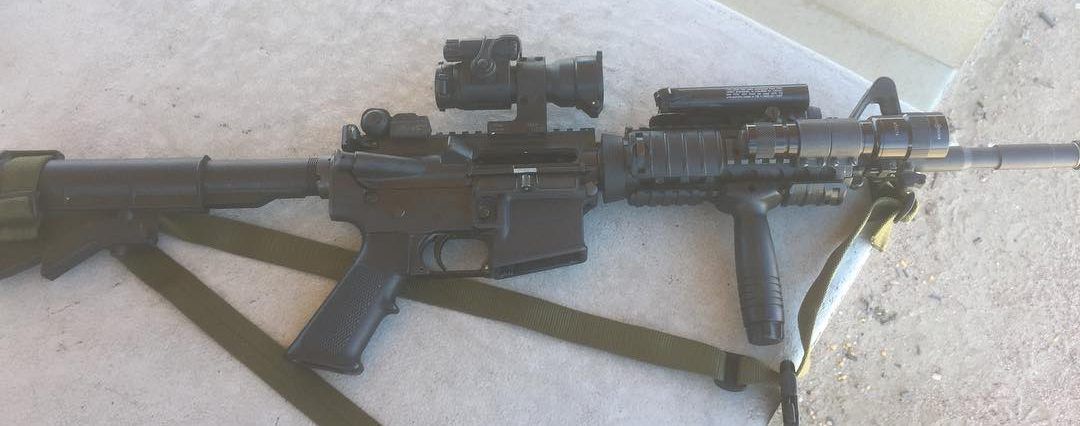
So, I’ve seen the platform go from essentially nothing…from the point where we were hose-clamping flashlights onto the fore grip, to now where we can have pretty much any accessory we want on there. So, I’ve seen everything.
The Good and the Bad of the Modern AR-15
The good is it’s very modular now. There’s pretty much no accessory that is not available that’s going to help you in some capacity, whether it’s to shoot, or see, or keep the gun on you. I would say the things that are bad are probably there’s too many options, and people get confused when there’s too many options, or they put too much stuff on the gun.
Q: So, with all of the options out there, what is the bottom line on what accessories we need to have on our firearms?
Kyle Defoor: The bottom line is, on a modern day carbine, you need an optic of some kind, you need a flashlight, and you need a sling on it. Those are the three things that are key. Those are the three things that are so good nowadays in some capacity, there’s no reason to not have on your gun. That’s where I would look at it…optics, flashlight, sling.
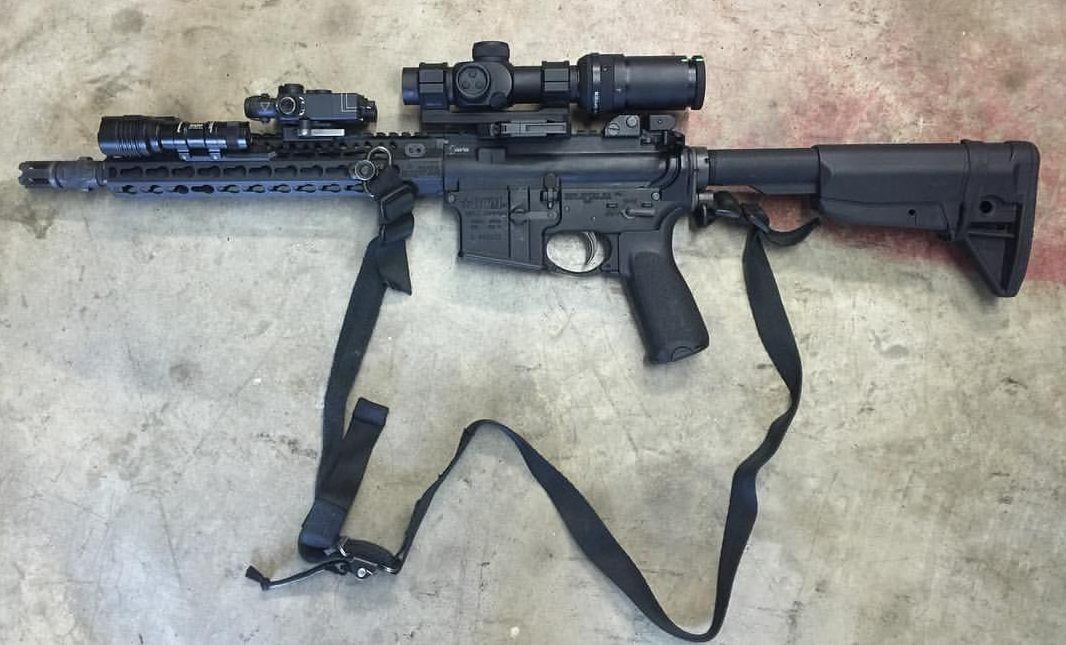
Q: Let’s talk red dot optics vs. scope. You’re a proponent of a low power variable optic over a red dot optic. As a big fan of my Aimpoint T1 red dot optic, can you tell me why I should consider something like a 1-6x variable powered optic?
Kyle Defoor: I mean essentially, a red dot optic was great at the beginning. We used red dots because there were no scopes that were suitable for up close, rapid engagement. They didn’t exist back in the early and mid-90s.
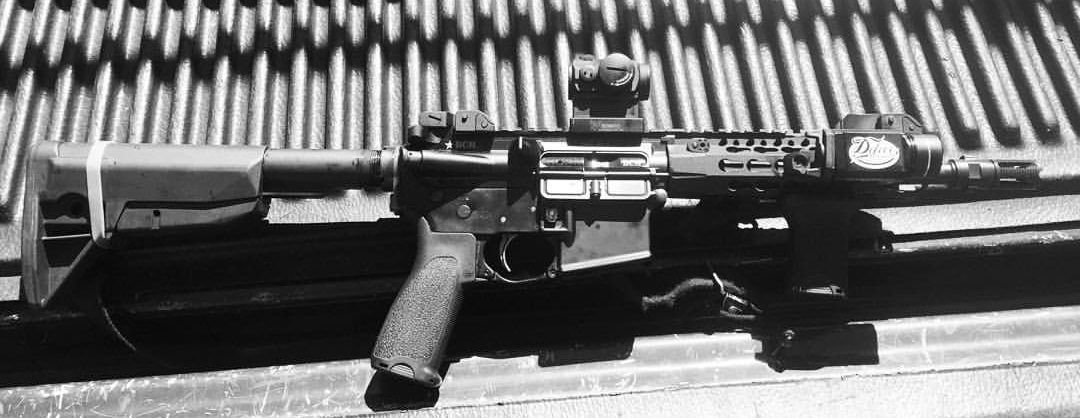
Nowadays, those scopes DO exist, so in my opinion, there is really no reason to not have a low power variable (LPV). As long as it’s true 1x, and has a daytime visible red dot, you’re getting the same optic as a red dot.
The difference in a LPV that’s set up like that and a traditional red dot optic, is a traditional red dot optic is regulated to about 50-100 yards for positive ID….meaning that you can tell if it is a gun or a phone or a shovel or a rifle, depending on weather conditions and lighting.
With a scope, that distance is 200 or a little more. It’s not really even a fair comparison. It will take everyone a few years to get on board and train, but an LPV is the way to go.
Q: Are there any negatives to a low powered variable optic in your experience?
Kyle Defoor: The only disadvantage to having a low powered variable optic on a rifle is weight. That’s it. There is no other disadvantage.
Back in the day, before true 1x low powered variable optics came out, there was a disadvantage as far as speed for up close engagements inside of CQB distances. That’s not a factor anymore. Not only have the optics gotten better, but we’ve learned how to shoot them better. We’ve maintained the same speed of an red dot optic up close, but we can go way past engagement distances that a red dot optic can.
Q: So, lets say I select a low powered variable optic over a red dot optic. I see 1×4, 1×6, 1×8…is one more ideal for the AR-15?
Kyle Defoor: As far as power goes on a low powered variable optic, I like a 1×6. I would not go less than 6x. On the high end, I would go 1×8. That seems to cover it. A 1×6 low powered variable optic is probably my favorite for the AR platform.
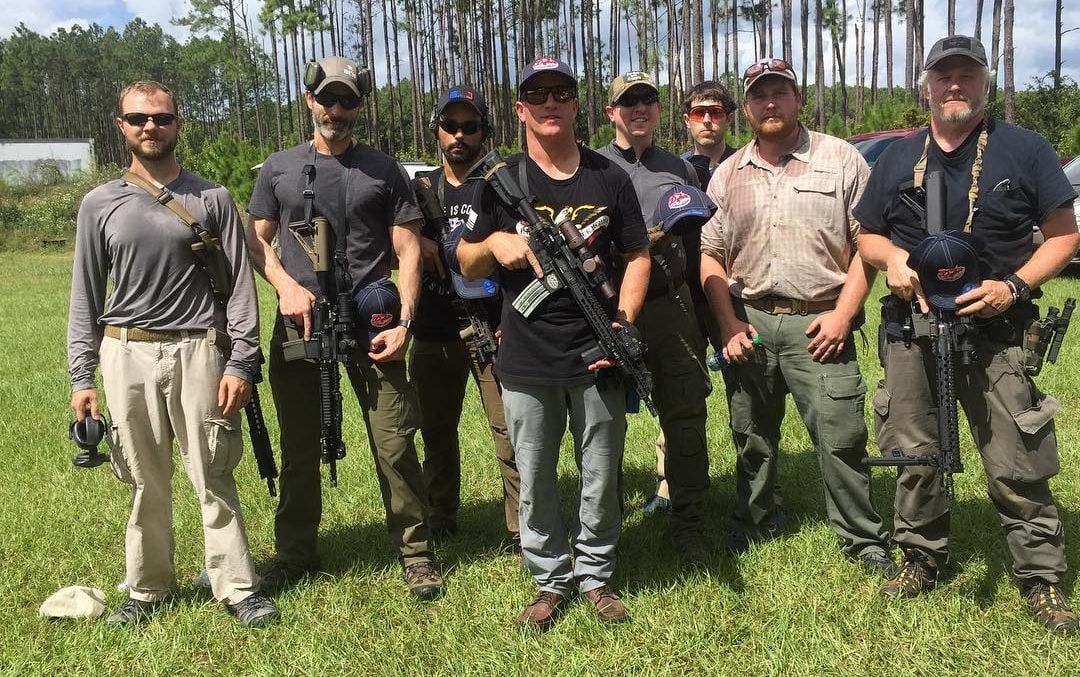
Q: So, when it comes to a red dot optic, I know to trust names like Aimpoint and perhaps the Trijicon MRO…But what optics manufacturers should we be looking at for low powered variable optics?
Kyle Defoor: As far as low powered variable optic manufacturers, essentially I would say you have your “big four”, which are Vortex, Schmidt & Bender, Nightforce and Leupold. And then you have your “other” three…Kahles, Steiner and Primary Arms. But all of those guys make LPVs that are good.
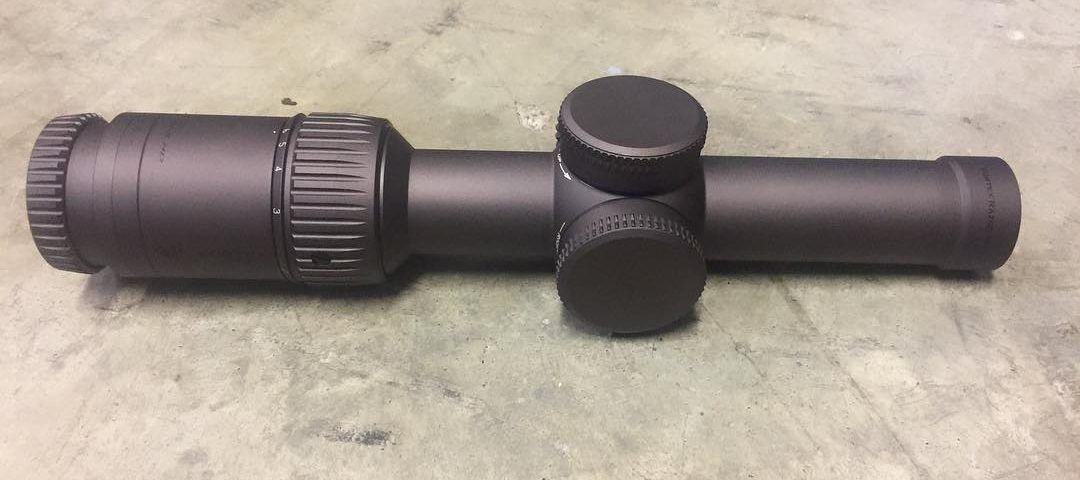
My favorite low powered variable optic would be the Vortex Razor, because it is so crystal clear and it has such a generous eye box that it makes it very easy to shoot.
Q: Let’s say I’ve recently invested in a red dot optic for my AR-15, and I’m not quite ready to trade up to a low powered variable optic… What’s your opinion on something like a 3x magnifier placed behind my existing red dot optic?
Kyle Defoor: I think a magnifier behind your red dot optic gets you to that place where you can positively identify a target past 100 yards and you can engage a target probably past 200 pretty easily.
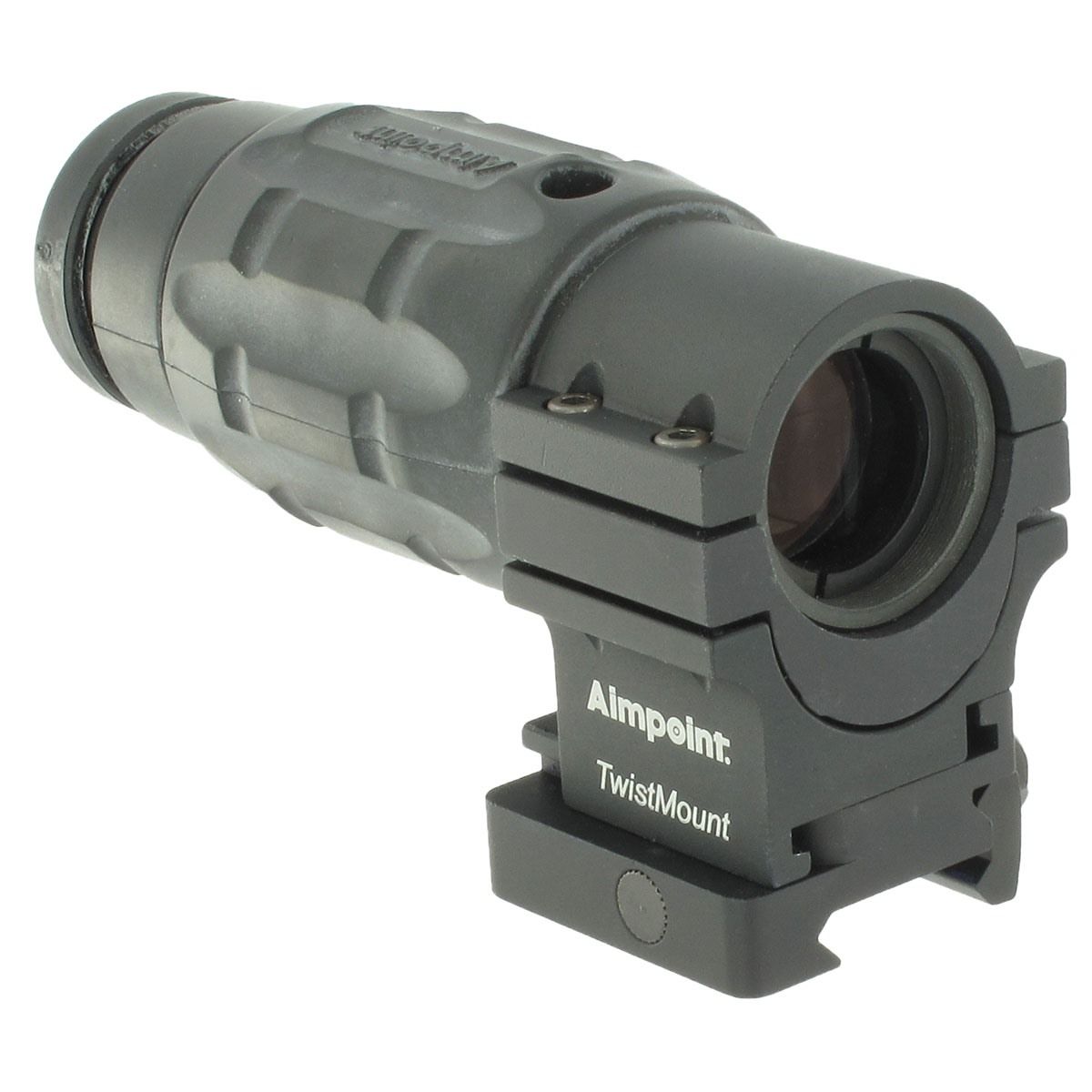
And all these distances I am talking about, I am talking about kill-zone shots, not just hitting a piece of steel somewhere on it. I know a lot of people, when I throw out distances, they go, “well I shoot my iron sights at 500 yards”, but you’re not shooting your iron sights at 500 yards on an 8” circle.
Q: What does the future hold, in your opinion? Does the red dot optic go away? Does the low powered variable optic really just take over?
Kyle Defoor: I would think that as time goes on, the LPVs get better, meaning that they get lighter in weight, and they are able to make the batteries last longer. That would be my hope. Again, I personally don’t see a need for a red dot optic right now. The issues are just weight and cost. That’s the two biggest issues.
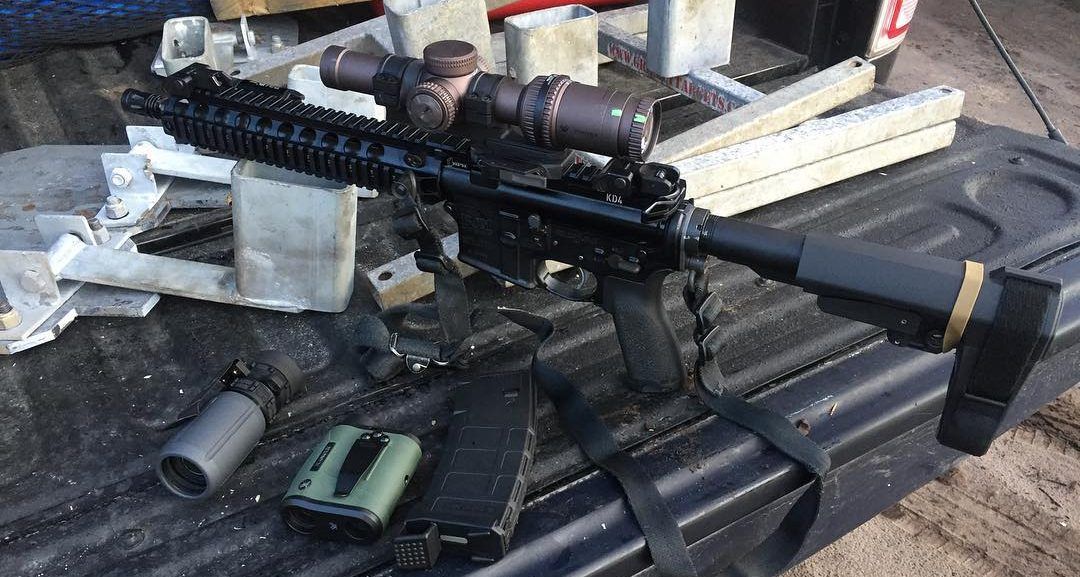
The cost thing to me is a non-player because basically they are double the cost of a red dot optic. There’s ways you can make it up. Maybe you can sell all your red dots and just buy one LPV. Don’t drink beer for a month (laughs)
Q: As we wrap up, any other advice you’d give to someone considering an LPV that’s maybe on the fence versus buying a red dot optic?
Kyle Defoor: We use cat tails on our scopes to make it so we can swing from 1x to max power pretty quickly…and that’s the thing, you have the best of both worlds. It’s so easy for me to dial down to 1x with an LPV. On the other hand, it’s very difficult for a red dot guy to make a 400-yard shot on a 1’ x 1’ target.
Q: I’m sure we could get into a lot of depth on this, but for the beginner, can we briefly talk reticles and focal planes on low powered variable optics? This is something I never had to worry about when I was dealing with my simple red dot optic.
Kyle Defoor: For a reticle, I would use a Mil-based reticle, MRAD reticle with MRAD turrets…what we call a Mil-Mil scope….Mil Turrets, Mil reticle…Because it’s the easiest way to learn. It’s the easiest way to do hold-overs and hold-unders, and there’s less math involved than anything MOA.
As far as focal plane goes, it’s a discussion that takes a long time to get every aspect of it out. The easiest and simplest way to say it is if you’re sticking a 6x and under, a second focal plane is not a big deal. If you go 8x, 10x and past that, I would consider a first focal plane, just because you’ll be able to use the reticle more effectively when you’re not on max power.
Q: For a beginner, can you explain how they will know if the scope they are looking at is a first or second focal plane?
Kyle Defoor: The easiest thing to do is pick up the scope, put it on max power, look at the reticle, and keep looking at the reticle as you turn it down to the minimum power…if the reticle stays the same size, it’s a second focal plane scope.
If the reticle changes sizes when you change magnification, it’s a first focal plane scope. And the advantages and disadvantages could be another article in itself, but 6x and under, second focal plane is fine, in my experience. More than 6x, I would consider a first focal plane.
Big thanks to Kyle for taking the time to speak with us about the advantages of the low powered variable optic over the red dot optic. For more information on Defoor Proformace Shooting, give them a visit at their web site.
###
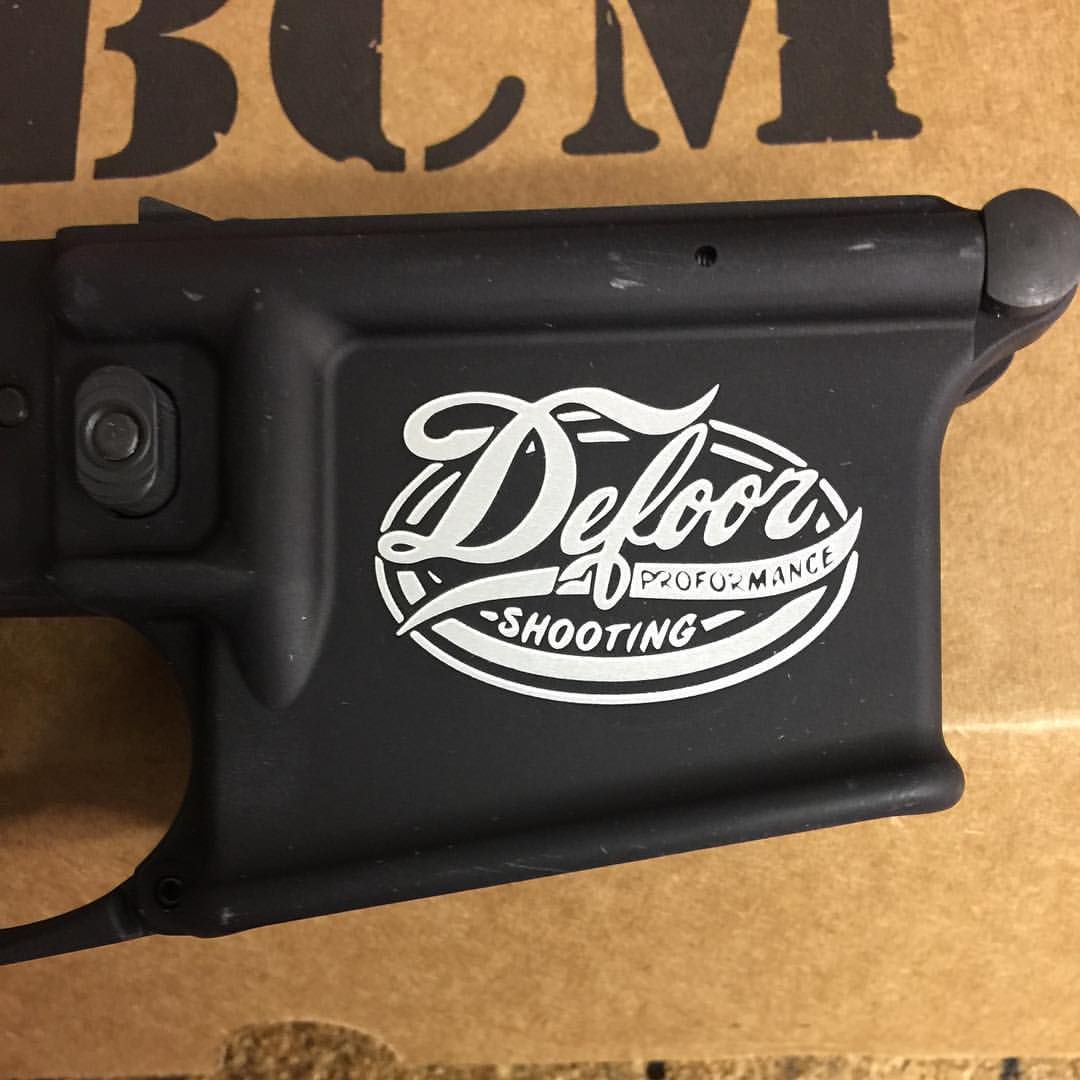


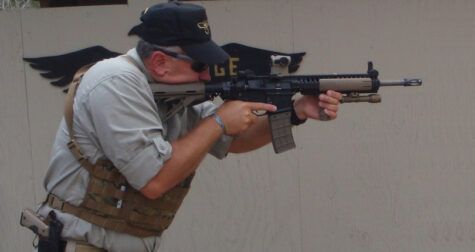
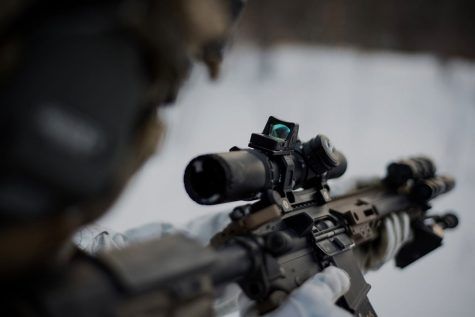

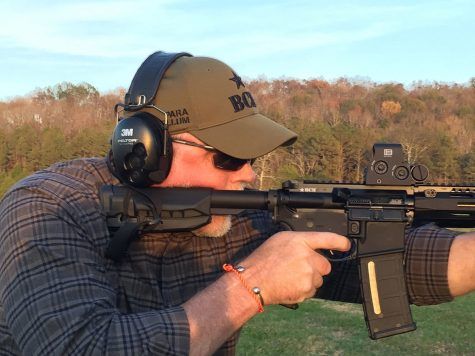
Always great info from Defoor.
Really good info here. I recently bought a LVPO for my .300 BLK and just lucked into a 2nd focal plane scope. It does exactly what I need it to do.